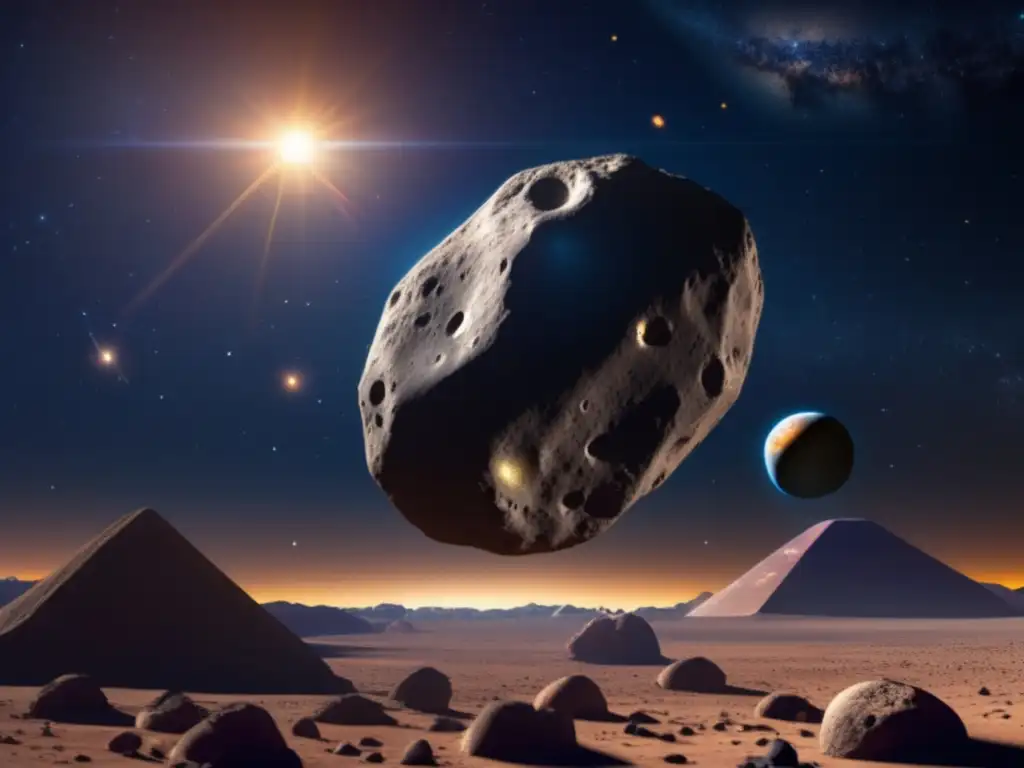The Enigmatic Tale Of 99942 Apophis

Introduction
99942 Apophis, named after the ancient Egyptian god of chaos and destruction, came into the astronomical spotlight in 2004 when initial observations revealed a potential impact with Earth in 2029. While subsequent research ruled out any possibility of impact in 2029, its close approach to Earth remains a significant event in recent asteroid history.
History of 99942 Apophis

Discovery and Initial Observations
Apophis was first discovered on June 19, 2004, by Roy A. Tucker, David J. Tholen, and Fabrizio Bernardi at the Kitt Peak National Observatory in Arizona. It was initially estimated to be approximately 330 meters in diameter and categorized as a potentially hazardous asteroid due to its proximity to Earth.
Impact Possibility and Further Research
Initial observations raised concerns that Apophis could impact Earth in 2029. However, subsequent observations ruled out an impact in 2029 and instead predicted a close approach to Earth at a distance of around 31,000 kilometers, closer than the geostationary satellites in orbit around Earth.
Further research conducted by scientists at the Jet Propulsion Laboratory in Pasadena, California, refined the estimate of Apophis' trajectory and impact risk. The most recent analysis suggests that Apophis has a negligible chance of impacting Earth for at least the next century.
Current Status and Future Research
Apophis is currently being monitored closely by astronomers worldwide to better understand its orbit and characteristics. In March 2021, NASA's Planetary Defense Coordination Office formally added Apophis to its list of potentially hazardous asteroids, signifying the continuing interest in studying this fascinating celestial object.
The Significance of Apophis

Scientific Research
Apophis represents a unique opportunity for scientific research. Its size and close approach to Earth make it a valuable target for spacecraft missions that could provide valuable data on the asteroid's composition, structure, and history.
For example, NASA's OSIRIS-REx mission, which successfully retrieved a sample from another asteroid named Bennu in 2020, is moving towards its secondary mission that involves visiting Apophis in 2029. The mission aims to study Apophis' physical and chemical properties and help scientists better understand the formation and evolution of our solar system.
Cultural Significance
Throughout history, asteroids have captured our imagination and inspired countless works of art and literature. The discovery and subsequent research surrounding Apophis have only added to its mystique and cultural significance.
Many cultures throughout history have viewed comets and asteroids as harbingers of doom and destruction, and the naming of Apophis after the Egyptian god of chaos and destruction reflects this tradition. However, the scientific research and exploration of Apophis also demonstrate humanity's desire to better understand and peacefully coexist with the forces of nature.
Frequently Asked Questions

-
Could Apophis impact Earth in the future?
While the possibility of impact cannot be completely ruled out, current research suggests there is a negligible chance of Apophis impacting Earth for at least the next century.
-
What is the composition of Apophis?
While the exact composition of Apophis is unknown, it is believed to be a stony asteroid, similar in composition to other asteroids in our solar system.
-
How was Apophis named?
Apophis was named after the ancient Egyptian god of chaos and destruction.
-
What scientific research has been done on Apophis?
Apophis is currently being monitored closely by astronomers worldwide to better understand its orbit and characteristics. Future missions, such as NASA's OSIRIS-REx mission, aim to study Apophis' physical and chemical properties in greater detail.
-
What is the significance of Apophis?
Apophis represents a unique opportunity for scientific research and exploration and has captured the imagination and cultural significance throughout history.
Conclusion
The discovery and subsequent research surrounding 99942 Apophis demonstrate both the scientific curiosity and cultural significance of asteroids. While there is no immediate threat of impact, Apophis remains a valuable target for scientific research and exploration, offering insights into the formation and evolution of our solar system. As we continue to learn more about these fascinating celestial objects, we gain a deeper understanding of our place in the universe.
Thank you for taking the time to explore the enigmatic tale of Apophis with us. We encourage you to share your thoughts in the comments section and to positively interact with www.asteroidrealm.com, whether by subscribing, sharing the article on social networks, or other forms of participation.
Additional Resources

If you're interested in learning more about asteroids and their significance, check out these additional resources:
- NASA's webpage on Apophis
- Asteroid Realm - Your Ultimate Guide to Asteroids
- NASA's overview of Asteroids, Comets, and Meteors
 The Lost Centaur: The Discovery And Mystery Of 1995 SN55
The Lost Centaur: The Discovery And Mystery Of 1995 SN55 Mysteries And Discoveries Of The Kuiper Belt
Mysteries And Discoveries Of The Kuiper Belt The Chronicle Of 2015 BZ509: The First Interstellar Immigrant
The Chronicle Of 2015 BZ509: The First Interstellar ImmigrantIf you want to discover more articles similar to The Enigmatic Tale Of 99942 Apophis, you can visit the Asteroid Discoveries category.
Leave a Reply

Articulos relacionados: